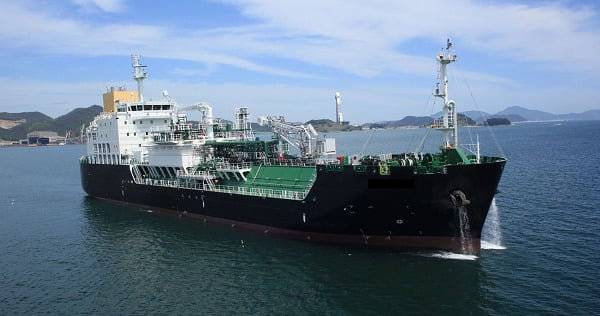Liquefied Natural Gas (LNG) vessels play a crucial role in the global energy trade. As the demand for cleaner energy sources grows, LNG has become a pivotal fuel choice for countries seeking to reduce their carbon footprint. In this article, we’ll explore the progress of LNG vessels, their impact on global trade, and why their role continues to expand in the maritime and energy sectors.
What Are LNG Vessels?
LNG vessels are specially designed ships used for transporting liquefied natural gas. LNG is natural gas that has been cooled to a liquid state, reducing its volume by approximately 600 times. This process makes it easier to store and ship over long distances, especially by sea.
LNG vessels come equipped with cryogenic tanks that maintain the extremely low temperatures necessary to keep the gas in liquid form during transit. These vessels are typically large and specially engineered to handle the challenges of transporting LNG safely and efficiently.
The Rise of LNG in Global Trade
LNG has rapidly become a significant player in the global energy market, thanks to its lower carbon emissions compared to other fossil fuels. As many countries shift away from coal and oil, LNG has emerged as a cleaner alternative, especially for power generation and transportation.
Key Drivers of LNG’s Growth:
- Environmental Considerations: LNG emits about 50% less CO2 than coal and 20% less than oil, making it an attractive option for countries aiming to meet international climate commitments.
- Technological Advancements: Innovations in LNG carrier design, storage, and transfer technology have increased the safety, efficiency, and cost-effectiveness of LNG transportation.
- Energy Security: LNG imports offer countries a diversified energy source, reducing dependence on pipeline infrastructure and promoting energy security.
LNG Vessel Design and Technological Advances
As LNG transportation grows, so does the technology behind the vessels that carry it. Innovations in LNG vessel design have greatly improved efficiency, safety, and environmental sustainability.
- Improved Insulation and Storage
Modern LNG vessels feature advanced cryogenic insulation technology, which minimizes heat gain during transport and ensures that the gas remains in its liquid state. These vessels are equipped with membrane-type or independent tank designs to maximize space and efficiency. - Dual-Fuel Propulsion
Many new LNG carriers are being built with dual-fuel propulsion systems that allow the ship to run on both LNG and traditional marine fuels. This not only makes the vessels more fuel-efficient but also reduces harmful emissions, further aligning with global sustainability goals. - Reduced Emissions and Environmental Impact
The LNG industry has made strides in reducing its environmental impact. Many vessels now come equipped with advanced air emissions control systems, reducing the sulfur oxide (SOx) and nitrogen oxide (NOx) emissions that can harm the environment. - Automation and Digitalization
The adoption of automation and digital technologies in LNG vessels is improving operational efficiency. From real-time monitoring of fuel usage to advanced navigation systems, these technologies help operators optimize fuel consumption, reduce costs, and enhance safety.
LNG Vessels: Key Players in Global Trade Routes
LNG vessels are crucial to global energy trade, enabling countries to access natural gas even if they don’t have local reserves or pipelines. Major LNG-producing countries like Qatar, the United States, and Australia rely on LNG vessels to transport gas to markets around the world.
Key LNG Trade Routes:
- Middle East to Asia: Qatar and other Middle Eastern countries are major exporters of LNG to countries like Japan, South Korea, and China, which are among the largest LNG importers.
- United States to Europe and Asia: The U.S. has become one of the top exporters of LNG, especially after the shale gas boom. LNG shipments from the U.S. are expected to play an increasing role in global energy trade.
- Australia to Asia: Australia is another key player in the LNG export market, with large volumes of LNG exported to major consumers like Japan, China, and India.
LNG shipping helps to bridge the gap between gas-producing and gas-consuming countries, offering a flexible and efficient alternative to traditional pipeline systems.
Challenges and Future Trends in LNG Vessel Operations
While LNG vessels have revolutionized the global energy market, several challenges remain. These include the high cost of building and maintaining LNG carriers, geopolitical tensions that can disrupt trade routes, and fluctuations in demand for LNG.
However, the future looks promising for LNG vessels and their role in global trade. As international pressure for cleaner energy sources intensifies, LNG will continue to be a key player in transitioning to more sustainable energy systems.
Key Future Trends:
- Decarbonization Initiatives: The maritime industry is focusing on achieving net-zero emissions by 2050, and LNG is seen as a bridge fuel in this transition. Efforts to decarbonize LNG operations, such as using bio-LNG or green hydrogen, are underway.
- Increased LNG Infrastructure: The growth of LNG fueling stations and LNG bunkering ports around the world is making it easier for LNG vessels to operate globally and sustainably.
- LNG as a Marine Fuel: As the shipping industry looks to reduce its carbon footprint, LNG’s role as a marine fuel is expanding. Ships powered by LNG emit fewer pollutants, and the adoption of LNG-powered vessels is expected to rise in the coming years.
Conclusion: The Ongoing Importance of LNG Vessels in Global Trade
LNG vessels are integral to the global energy supply chain, playing a key role in the movement of natural gas across international markets. Technological advancements have improved the efficiency, safety, and environmental sustainability of these vessels, making them more essential than ever in meeting the world’s growing demand for cleaner energy.
As the world transitions to more sustainable energy sources, LNG vessels will continue to be vital in the shift towards cleaner alternatives, enabling a more secure, environmentally friendly global energy future.
For those in the maritime and energy sectors, understanding the role of LNG vessels and their impact on global trade is essential to staying ahead in an evolving industry.

